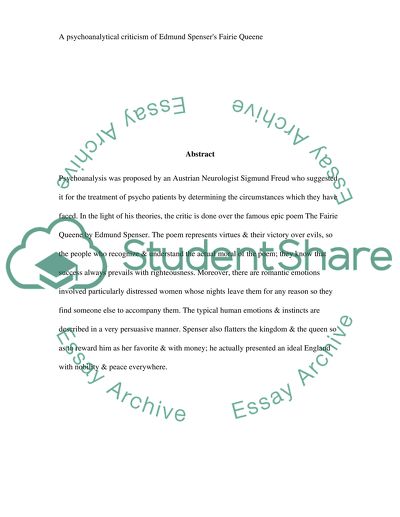Cite this document
(“A psychoanalytical criticism of Edmund Spenser's Fairie Queene Research Paper”, n.d.)
Retrieved from https://studentshare.org/literature/1393615-a-psychoanalytical-criticism-of-edmund-spensers-fairie-queene
Retrieved from https://studentshare.org/literature/1393615-a-psychoanalytical-criticism-of-edmund-spensers-fairie-queene
(A Psychoanalytical Criticism of Edmund Spenser'S Fairie Queene Research Paper)
https://studentshare.org/literature/1393615-a-psychoanalytical-criticism-of-edmund-spensers-fairie-queene.
https://studentshare.org/literature/1393615-a-psychoanalytical-criticism-of-edmund-spensers-fairie-queene.
“A Psychoanalytical Criticism of Edmund Spenser'S Fairie Queene Research Paper”, n.d. https://studentshare.org/literature/1393615-a-psychoanalytical-criticism-of-edmund-spensers-fairie-queene.


